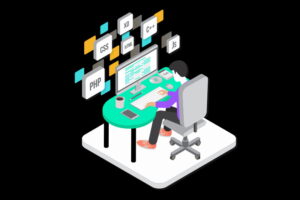Imagine an orchestra preparing for a grand performance. Each musician has talent, but unless the conductor understands the rhythm of the group, the strengths of each player, and how to support those who are struggling, the music may never feel harmonious. Organisations face a similar challenge. They possess diverse teams, skilled individuals, and ambitious goals. Yet, without a way to understand the patterns of performance, morale, collaboration, and growth, productivity can sound out of tune.
HR analytics acts as that conductor. Not as a set of cold calculations, but as a system that listens closely, observes behaviour, identifies subtle signals, and ensures each person has the environment, support, and motivation to bring their best selves to work. Through data-informed empathy, leaders can improve workplace culture, reduce burnout, enhance engagement, and strengthen business outcomes — all while creating a space where people genuinely enjoy working.
Listening to the Rhythm of the Workplace
At its core, HR analytics isn’t about tracking numbers — it’s about listening. Every workspace has a pulse. It beats through conversations in hallways, feedback shared in one-on-ones, performance reviews, and even the silence of unasked questions.
Consider a team where deadlines are routinely missed. Traditional management might respond by increasing oversight. But HR analytics invites a deeper look — Are employees overwhelmed? Do they lack clarity? Are skill gaps silently hindering progress?
By analysing patterns in employee surveys, workload distribution, project timelines, and communication sentiment, leaders can locate why challenges occur rather than simply reacting to the symptoms. When decision-making becomes proactive rather than reactive, teams feel understood rather than pressured.
Making Invisible Challenges Visible
Every workplace carries invisible factors: quiet stress, unspoken expectations, and subtle burnout. HR analytics helps surface these unseen dynamics.
For example, if exit interviews show employees leaving after 18 months, this is not just a data point — it’s a pattern calling for curiosity. Maybe mentorship is lacking. Perhaps managers need coaching support. Or maybe opportunities for growth are unclear.
This is where structured learning interventions matter. Many professionals seek growth pathways to improve decision-making and leadership. For instance, individuals exploring long-term career development often consider enrolling in solutions such as a business analysis course in Pune, which equips them with frameworks to support data-driven decision environments. This type of learning reinforces the foundation required to interpret workplace patterns thoughtfully and confidently.
Designing Growth Journeys Instead of Career Ladders
Traditional career paths look like ladders — narrow and linear. HR analytics invites a shift to growth journeys — dynamic, personalised, and flexible.
By studying what motivates employees — skill mastery, collaboration opportunities, creative freedom, or leadership — organisations can design roles and development plans that fit real humans rather than generic templates.
A software developer may thrive by mentoring or exploring UI design. A salesperson might grow faster when paired with data-driven storytelling workshops. Universal performance models rarely unlock individual brilliance. Analytics allows organisations to customise career experiences.
Nurturing Leaders Who Support, Not Supervise
Data doesn’t replace human judgment — it enhances compassion. HR analytics helps leaders understand how different personalities work, respond to stress, and collaborate.
Picture two high-performing teams:
- One thrives because the manager nurtures open communication and celebrates growth.
- The other struggles because leadership focuses only on output.
By examining feedback scores, workload heatmaps, and peer collaboration data, organisations can identify leadership styles that energise versus drain teams. Supporting managers through targeted training — sometimes informed by structured learning programs like a business analysis course in Pune — ensures they learn to guide with clarity, emotional intelligence, and fairness.
Building a Culture Where People Choose to Stay
Retention isn’t just about pay. It’s about whether people feel seen, valued, and supported. HR analytics helps design policies, benefits, workplace rituals, and communication patterns that strengthen belonging.
This may look like:
- Introducing flexible work arrangements based on well-being insights
- Creating recognition systems linked to collaboration, not just output
- Providing transparent internal mobility pathways
- Encouraging meaningful feedback loops
When people feel understood, they don’t just work — they care.
Conclusion
HR analytics is not a dashboard of metrics. It is a philosophy of understanding people deeply and acting on that understanding with empathy and strategy. It connects data with humanity, insights with culture, and intention with action.
By listening to organisational rhythm, revealing invisible challenges, nurturing leadership, and designing meaningful growth pathways, HR analytics transforms workplaces into environments where employees feel inspired to contribute, collaborate, and stay committed.
When teams feel happier, supported, and confident, productivity becomes not an expectation but a natural, shared achievement.












